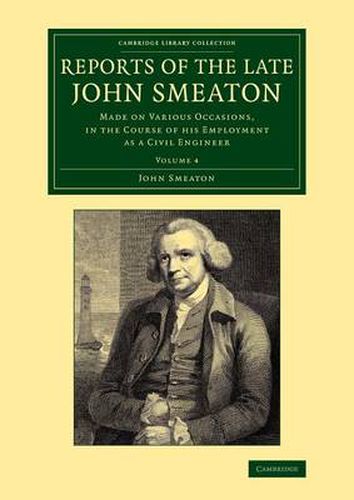Readings Newsletter
Become a Readings Member to make your shopping experience even easier.
Sign in or sign up for free!
You’re not far away from qualifying for FREE standard shipping within Australia
You’ve qualified for FREE standard shipping within Australia
The cart is loading…






Celebrated for his construction of the Eddystone Lighthouse near Plymouth, John Smeaton (1724-92) established himself as Britain’s foremost civil engineer in the eighteenth century. A founder member of the Society of Civil Engineers, he was instrumental in promoting the growth of the profession. The Royal Society awarded him its Copley medal for research into wind and water power in 1759. After his death his papers were acquired by the president of the Royal Society, Sir Joseph Banks, Smeaton’s friend and patron. Using these materials, a special committee decided to publish ‘every paper of any consequence’ written by Smeaton, as a ‘fund of practical instruction’ for current and future engineers. These were published in four illustrated volumes between 1812 and 1814. Published in 1814 using the original engraved plates, Volume 4 contains the papers that Smeaton published in the Royal Society’s Philosophical Transactions, as well as related correspondence.
$9.00 standard shipping within Australia
FREE standard shipping within Australia for orders over $100.00
Express & International shipping calculated at checkout
Celebrated for his construction of the Eddystone Lighthouse near Plymouth, John Smeaton (1724-92) established himself as Britain’s foremost civil engineer in the eighteenth century. A founder member of the Society of Civil Engineers, he was instrumental in promoting the growth of the profession. The Royal Society awarded him its Copley medal for research into wind and water power in 1759. After his death his papers were acquired by the president of the Royal Society, Sir Joseph Banks, Smeaton’s friend and patron. Using these materials, a special committee decided to publish ‘every paper of any consequence’ written by Smeaton, as a ‘fund of practical instruction’ for current and future engineers. These were published in four illustrated volumes between 1812 and 1814. Published in 1814 using the original engraved plates, Volume 4 contains the papers that Smeaton published in the Royal Society’s Philosophical Transactions, as well as related correspondence.